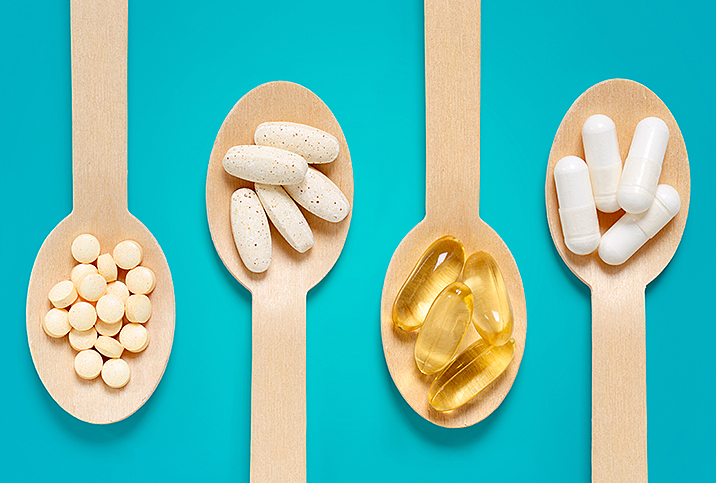For Your Health, Get to Know the Sources of Omega-3 Fatty Acids

Marketing campaigns over the past few decades may have convinced you that fatty foods are unhealthy, and to be fair, some are. Omega-3 fatty acids, however, are on the rise in public opinion, from posters on the walls of doctor's offices to news blogs and medical talk shows.
Omega-3 fatty acids have been credited with lowering blood pressure, reducing triglycerides, slowing the development of plaque in the arteries, and reducing the likelihood of heart attack, stroke and sudden cardiac death for people with heart disease. They can help sexual response by raising dopamine levels in the brain to trigger arousal. In their role as a potent antioxidant, they can help counteract oxidative stress occurring in penile tissues and assist erectile function.
In men, omega-3s have been cited for raising semen volume and sperm count. For women, two studies carried out in 2012 and 2018 indicated omega-3 fatty acids may be effective in reducing menstrual pain because of their anti-inflammatory properties.
What are omega-3s?
Fat is a necessary part of our diet, just like salt, sugar, vitamins, minerals and water. However, when we consume an excessive amount of fat—that is, more than our bodies can use in a day—the fat gets stored for later use as energy.
"Fat has a lot of essential functions; your brain is more than 50 percent fat," said Nadeem K. Mohammed, Ph.D., who has a doctorate in nutritional sciences. "Fat coats your nerves and helps your impulses work appropriately. Fat is needed in our diets."
Our bodies break down the fat we eat into fatty acids, which are absorbed into the body and used to help it function. Certain vitamins, such as A and D, are fat soluble. This means fat is needed in order for these vitamins to be used effectively within the body.
Think of vitamin K (another fat-soluble vitamin) as a walnut. It's pretty difficult to get any nutritional value out of walnuts while they're in their shell. No matter how many walnuts you have (how much vitamin K you consume), you can't actually eat the walnuts until you crack the shells to get at the nuts inside. Fat is like a nutcracker "cracking open" vitamin K so your body can use it.
Omega-3 fatty acids are a specific group of fatty acids, consisting of:
- ALA, or alpha-linolenic acid, found in foods such as chia seeds, avocados and oatmeal.
- DHA, or docosahexaenoic acid, found in seafood such as mussels, crab and tuna.
- EPA, or eicosapentaenoic acid, found in foods such as herring, sardines and mackerel.
Your body can't make these fatty acids on its own, so it gets the necessary quantities from the foods you eat or the supplements you take.
How omega-3 fatty acids keep you healthy
Fatty acids play a big role in the overall health of your body as they help maintain the critical membranes around each of the cells in your body, from skin cells to sperm cells.
For example, there's normally a lot of DHA in and around the retina, the layer of tissue at the back of your eyeball that processes light and sends the signal to your brain. If those cells become damaged, you can experience blurry or dim vision or complete blindness in extreme cases. Keeping your DHA at a healthy level can help those cells function better and for a longer period of time, protecting your eyesight over the course of your life.
Based on data from the 2011 to 2012 National Health and Nutrition Examination Survey, most adults and children in the United States get their recommended requirement of omega-3s as ALA; average daily intake is 1.59 grams for females and 2.06 grams for males. But omega-3 intake of DHA and EPA is relatively small from a regular diet, about 40 milligrams for children and teens, and about 90 milligrams for adults.
The survey indicated more than 90 percent of Americans were not meeting recommendations for daily omega-3 intake. About 7.8 percent of adults and 1.1 percent of children and teens had taken a supplement in the previous 30 days.
There is no specific recommendation for the amount of omega-3 fats your body requires, although various health organizations have suggested a minimum of 250 to 500 milligrams of DHA and EPA combined, and 1.1 grams of ALA for women and 1.6 grams for men. If you experience the following symptoms, you may not be getting your ideal amount of omega-3s:
- Fatigue. Feeling tired on a regular basis could be a sign of omega-3 deficiency. However, fatigue is a symptom of other medical issues such as iron deficiency anemia and hypoglycemia. Talk to your doctor to find out if an omega-3 deficiency could be the cause.
- Poor memory and mood swings. When there aren't enough omega-3 fatty acids in the brain, the cells can start to malfunction. This can affect memory and the release of hormones that regulate mood, triggering symptoms of depression or exacerbating existing conditions such as bipolar disorder.
- Dry skin. Without adequate omega-3s, skin cells don't get the nutrients they need and may not be able to retain moisture, which can lead to skin that's excessively dry, even just a few hours after applying lotion.
- Poor circulation. Blood is how the body moves nutrients to where they are needed. If your circulation is poor, nutrients can't reach their destinations, causing a host of other problems such as erectile dysfunction (ED), numbness or slower healing of cuts and bruises.
Not every ache or pain is a sign of an omega-3 deficiency. Factors such as your age, how hectic your lifestyle is and what kinds of foods you eat make some of these problems appear or make them worse than normal. Before making any major adjustments to your diet or your supplement regimen, be sure to touch base with your physician to ensure the decisions you're making are healthy ones.
Sources of omega-3 fatty acids
You can't naturally make omega-3 fatty acids on your own, so you need to get them from other sources. The two easy options are the foods you consume on a daily basis and supplements.
Supplements are a reliable way to get the amount of omega-3 fatty acids your body needs on a daily basis. This is especially true if you are on a highly restrictive diet or don't eat seafood or other good sources of omega-3s on a consistent basis. Ask your doctor for their recommendation of a reputable and safe supplement brand.
You can also naturally boost omega-3 fats by eating seafood, but other foods work as well. No matter what kind of diet you prefer, there's a way to incorporate some or all of the following foods into your meals and snacks:
- Avocado
- Chia seeds
- Edamame
- Flaxseed
- Hemp seeds
- Kidney beans
- Navy beans
- Oatmeal
- Olive oil
- Pecans
- Seaweed
- Soybean oil
- Walnuts
As with most issues related to health and diet, moderation is the name of the game. It is possible to consume an excessive amount of omega-3 fatty acids, which could harm your immune system, lower your blood pressure and thin your blood.
Editor's note: These statements have not been evaluated by the Food and Drug Administration. Our medical experts advise that you consult with your primary healthcare provider before you begin using a supplement. This information is not intended to diagnose, treat, cure or prevent disease.


















